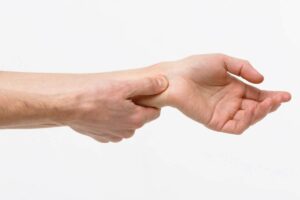Free download: Top 10 Natural & Easy Remedies for Joint Pain from Home. Learn these helpful remedies.
Estimated Reading Time: 11 minutes read
You’re going about your day, and suddenly notice ulnar wrist pain when twisting the wrist… where in the world did this come from?
Ulnar wrist pain, or pain on the pinkie finger side, can be a real bother when trying to use your hand and wrist. It’s very common to experience ulnar wrist pain when twisting the wrist and forearm, such as with twisting open the cap on a drink, or opening a jar of food.
What exactly is causing this ulnar sided wrist pain when twisting? Will it go away?
There are a variety of different reasons why you may be experiencing ulnar wrist pain. The exact cause of this wrist pain will determine what kind of treatment you should receive.
Table of Contents
The Ulnar Wrist
If you’re standing in a correct anatomical position, with the arms by your side and palms facing forward, the ulnar side of the wrist is on the medial, or inner, side.
The Bones
There are two forearm bones: the ulna bone and radius. Both of these end distally at the wrist to form the distal radioulnar joint.
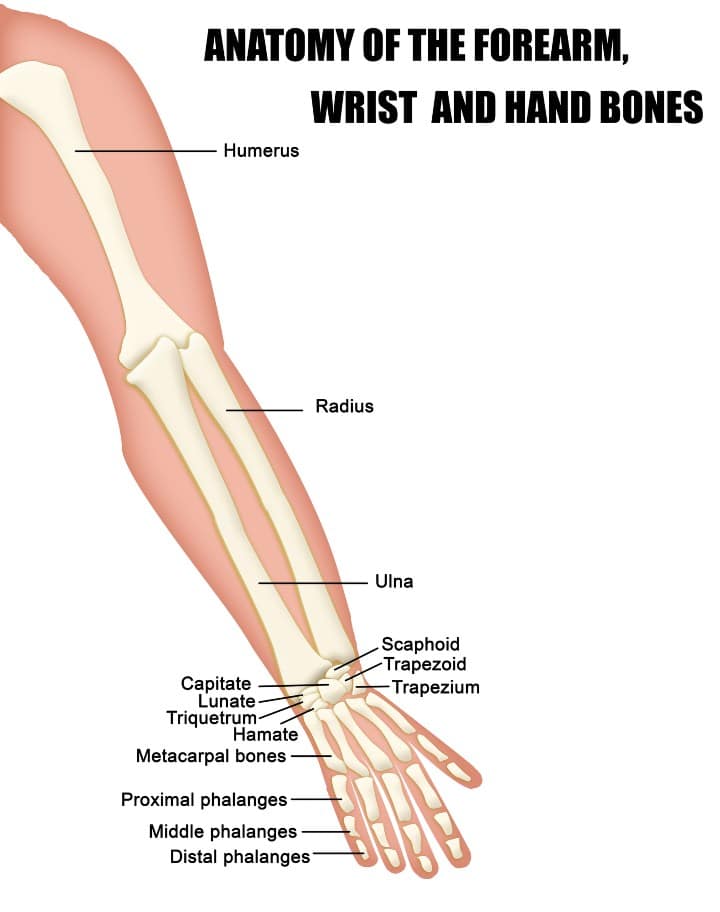
The distal end of the ulna bone near the wrist has two bony protrusions called the ulnar head and ulnar styloid process.
The radius has a natural groove, called the ulnar notch, which the head of the ulna fits nicely into. This is one area necessary for twisting the forearm, otherwise known as forearm pronation and supination.
Any injury or dysfunction to these anatomical structures can be a possible culprit behind ulnar wrist pain when twisting.
Surrounding Soft Tissue Structures
Muscles
There are a variety of muscles that attach to the ulna. These muscles aid in hand, wrist and finger movement. Involved wrist motions include the following:
- Wrist flexion
- Wrist Extension
- Wrist ulnar deviation or adduction
- Forearm pronation
- Forearm supination
Injury or irritation to any of the muscle groups that aid in rotating the wrist and forearm can also lead to ulnar wrist pain while twisting.
Ulnar Nerve
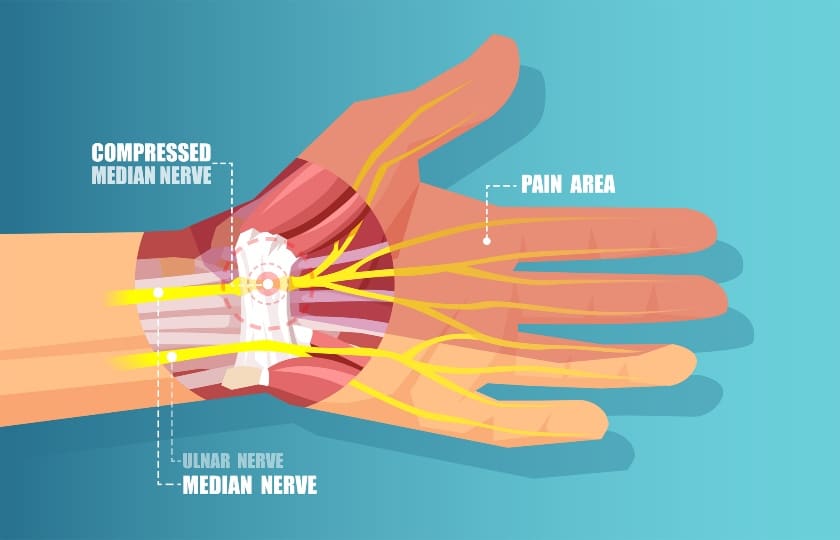
The ulnar nerve innervates, or powers, certain muscles in the forearm, hand and fingers. It allows for movement in your 4th and 5th fingers (ring and pinkie fingers).
You need the ulnar nerve for certain tasks, such as to grip an object, write, as well as bend and straighten the above listed fingers.
The ulnar nerve also controls sensation in certain areas. This includes your pinkie finger, the pinkie finger side of the ring finger, and the pinkie side of the palm and dorsum of the hand (front and back side).
Any type of disruption to the ulnar nerve can lead to abnormal hand, wrist and forearm functioning. There may be motor and/or sensory dysfunction, possibly contributing to ulnar wrist pain when twisting.
TFCC
While there are many soft tissue structures that help to stabilize the ulnar side of the wrist, an important area to make note of is the triangular fibrocartilage complex, or TFCC.
The TFCC is located in the wrist between the radius and ulna. It’s composed of various tendons, ligaments and cartilage that allow for movement and cushioning of the wrist.
Possible Causes of Ulnar Sided Wrist Pain

As previously mentioned, there are a number of reasons why you may be having ulnar wrist pain.
The following are some of the most common causes
- Arthritis
- Ulnar impaction syndrome
- Triangular fibrocartilage complex tears
- Ulnar artery thrombosis
- Ulnar nerve compression
- Ulnar bone fracture usually from a fall onto an outstretched hand
- Ganglion cyst
- Repetitive motions that lead to tendonitis or tendinopathy
It’s important to find the underlying cause in order to make a proper diagnosis and determine the most effective treatment.
Ulnar Wrist Pain Symptoms
Symptoms associated with ulnar wrist pain when twisting depends on the exact cause.
Ulnar Wrist Fracture

A bone fracture is almost immediately recognizable, as it will usually cause pain right away. This is most often caused by some type of trauma, like a fall onto an outstretched hand.
Besides ulnar wrist pain when twisting at a moderate or severe intensity, you may also notice the following symptoms with a fracture:
- Swelling
- Bruising
- Limited range of motion
- Decreased strength
- Unable to grip or lift objects
- Inability to twist the wrist or forearm
Ulnar Nerve Entrapment
When a nerve is involved, you may notice either or both changes in the motor and sensory functions in that area.
As we mentioned above, the ulnar nerve innervates muscles and sensation on the pinkie side of the wrist, forearm and hand. You may notice the following with ulnar nerve pinching:
- Numbness and/or tingling in the 4th and/or 5th fingers and pinkie side of the palmar and dorsum of the hand
- Weakness in the forearm muscles, such as with gripping
- Difficulty moving the 4th and/or 5th fingers specifically
- Difficulty with fine motor tasks, such as tying your shoes or buttoning a shirt
- Claw shape at the 4th and 5th fingers
Ulnar Impaction Syndrome
This syndrome results from the ulna being too long, creating an ulnar positive variance. As a result, the ulnar has to bear a greater load and force than it’s built for.
This can occur congenitally, in that you’re born with these structural changes, or it may occur over time due to other anatomic changes in the wrist and hand, whether they be natural or from an injury.
With increased loads, this can wear down the wrist bones and the surrounding muscles, tendons, ligaments and cartilage, such as in the triangular fibrocartilage complex.
Common symptoms of ulnar wrist pain related to ulnar impaction syndrome include the following:
- Wrist pain when rotating
- Ulnar pain when twisting
- Pain only eased with rest
- Clicking or locking in the wrist joint
- Decreased range of motion
- Decreased strength and use of the hand, wrist and forearm
- Possible swelling
Overuse Injuries and Soft Tissue Tears
Any of the soft tissues in the forearm, wrist and hand are susceptible to injury.
This may involve repetitive motion that causes wrist pain from overuse, or a specific injury causing an actual tear.
While symptom intensity can vary, the following are commonly seen:
- Decreased range of motion
- Decreased strength
- Possible swelling
- Ulnar wrist pain when twisting or with wrist flexion, extension, or ulnar deviation
- Pain when gripping or lifting objects
- Tenderness on the ulnar wrist
- Pain is relieved with rest
Structural and Systemic Abnormalities
Besides what was discussed with ulnar impaction syndrome, other structural or systemic abnormalities can present that may cause ulnar wrist pain when twisting.
These may include arthritis, the presence of bony osteophytes or bone spurs in the wrist bones, ganglion cysts causing abnormal pressure to the wrist, or an ulnar artery thrombosis disrupting blood flow and the necessary blood supply to the ulnar wrist.
Changes to the bones in the wrist joint will commonly cause ulnar sided wrist pain and stiffness, along with many of the above mentioned issues, such as decreased range of motion, strength and reduced functional use of the forearm, wrist and hand.
If a blood clot in the ulnar artery is suspected, you may also notice discoloration in the ring or pinkie fingers due to poor blood flow. You may additionally experience numbness and/or tingling in the same areas the ulnar nerve runs, as well as ulnar wrist pain when twisting.
Ulnar Wrist Pain Treatment Options
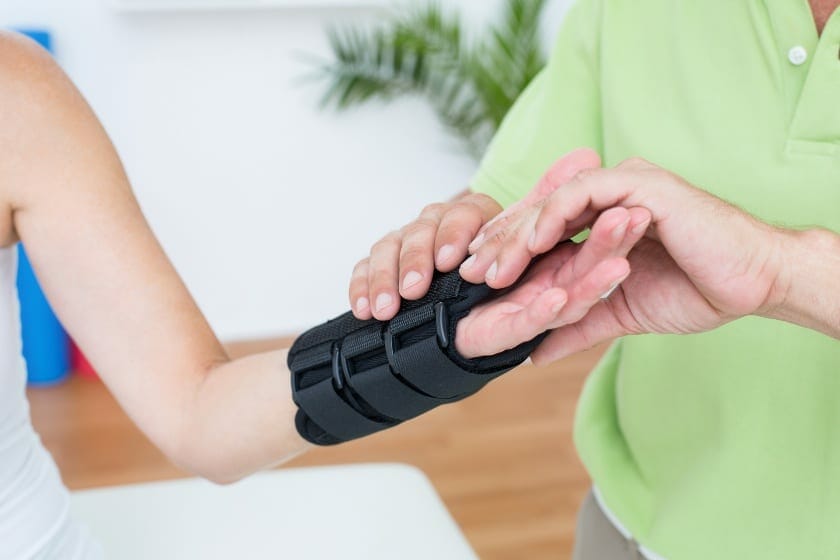
Treatment of ulnar sided wrist pain largely depends on an accurate diagnosis. After a thorough examination by your doctor and possible imaging (X rays, CT scan, ultrasound, MRI), treatment recommendations will be provided.
If an injury is able to be treated conservatively, the initial steps in the healing process will likely involve rest and activity modification. A wrist brace may be recommended to allow initial healing.
When appropriate, your doctor may refer you to physical therapy or occupational therapy to address any functional restrictions present.
Exercises for Ulnar Wrist Pain

Your occupational or physical therapist will perform a physical exam to determine what your limitations are.
After this, your therapy will typically include a variety of exercises, with the likely use of manual therapy (e.g., massage, trigger point release) and modalities (e.g., fluidotherapy, ultrasound, low level laser therapy).
The forearm muscles are very likely to develop tightness and trigger points with an ulnar wrist injury, which can further exacerbate pain. Check out this video that shows how to perform a self-massage or trigger point release to the forearm muscles using a firm ball.
While the exact exercises prescribed will vary, the following are a few common exercises you may find.
Wrist Extension Stretch
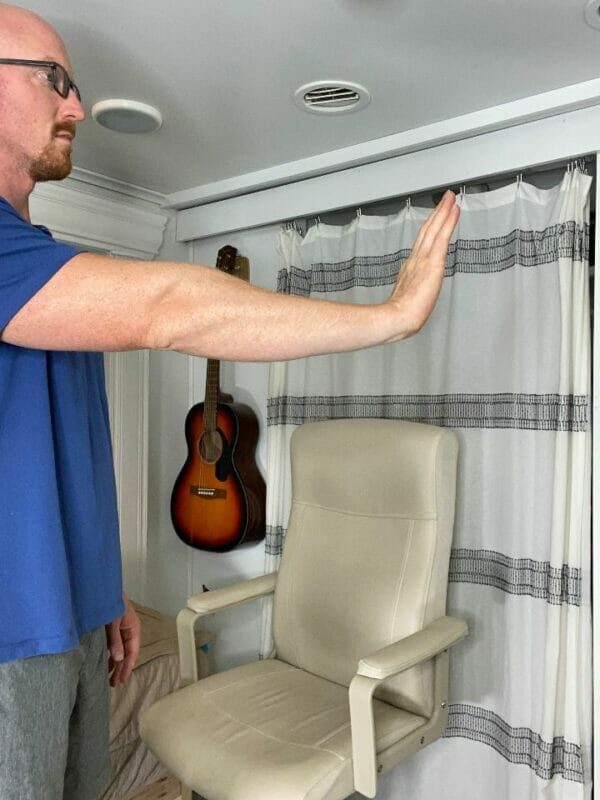
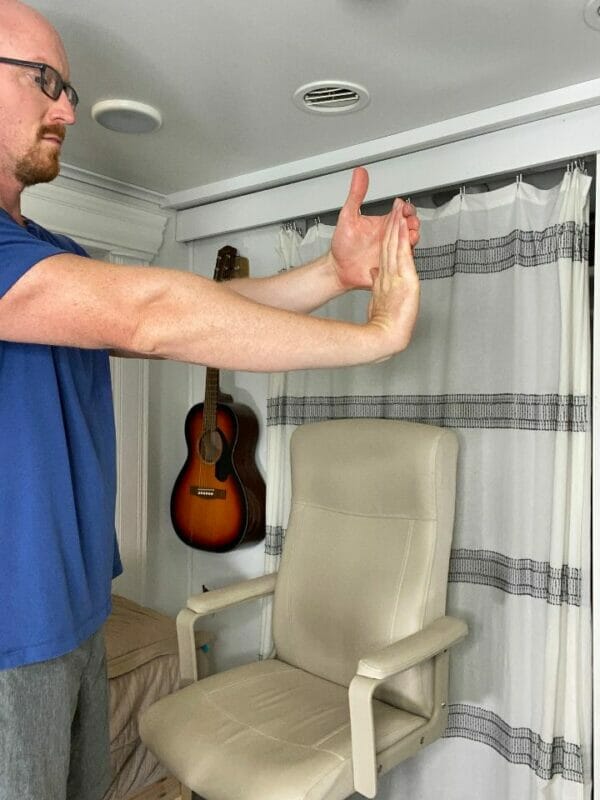
- In standing or sitting, reach the arm to be stretched in front of you at about shoulder height with the palm facing down.
- Extend the wrist, so that the fingers point towards the ceiling.
- Place your other hand over the palm side of the hand on the wrist being stretched.
- Apply a gentle pressure, so that you feel a stretch in the bottom of the wrist and into the forearm
- Hold for at least 30 seconds or up to 1 minute.
Wrist Flexion Stretch
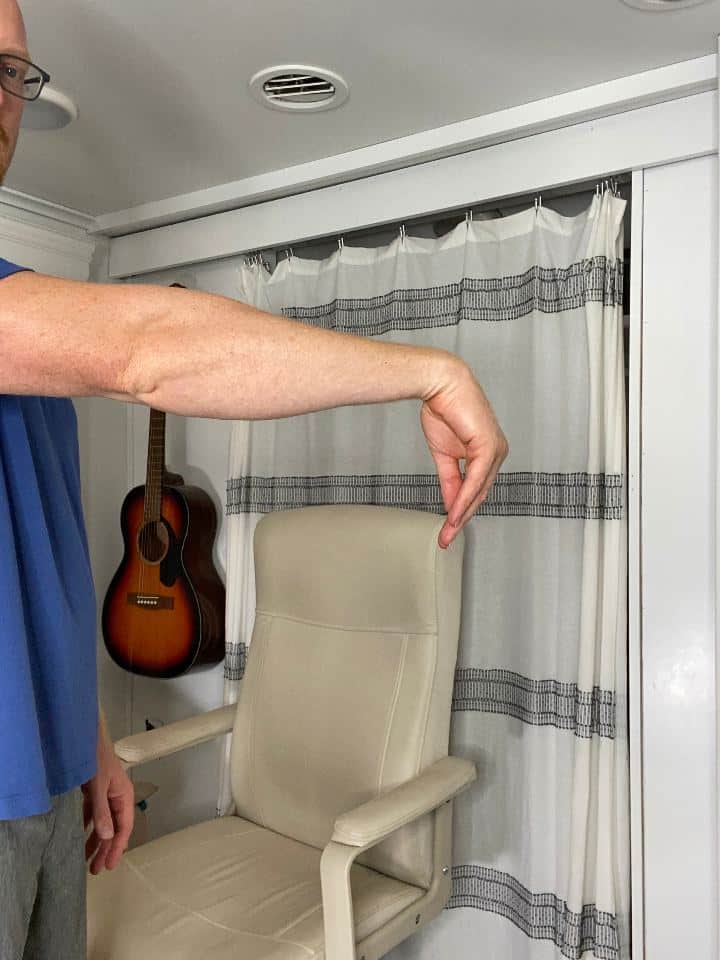
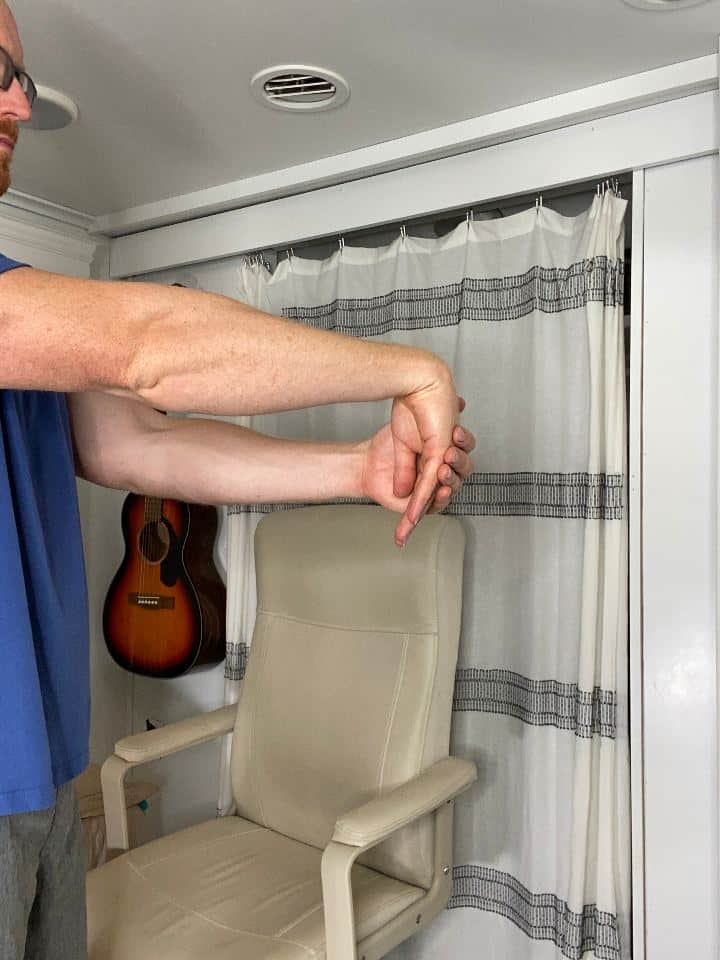
- Position yourself just like the wrist extension stretch, but this time flex the wrist so that the fingers point towards the floor.
- Place your other hand on the dorsum, or top, of the hand on the wrist being stretched.
- Apply a gentle pressure, so that you feel a stretch at the top of the wrist and into the forearm.
- Hold for at least 30 seconds or up to 1 minute.
Strengthening Wrist Extension, Flexion, and Ulnar Deviation
The video shown above will give a demonstration of how to perform each of the following movements.
1. Wrist Extension:
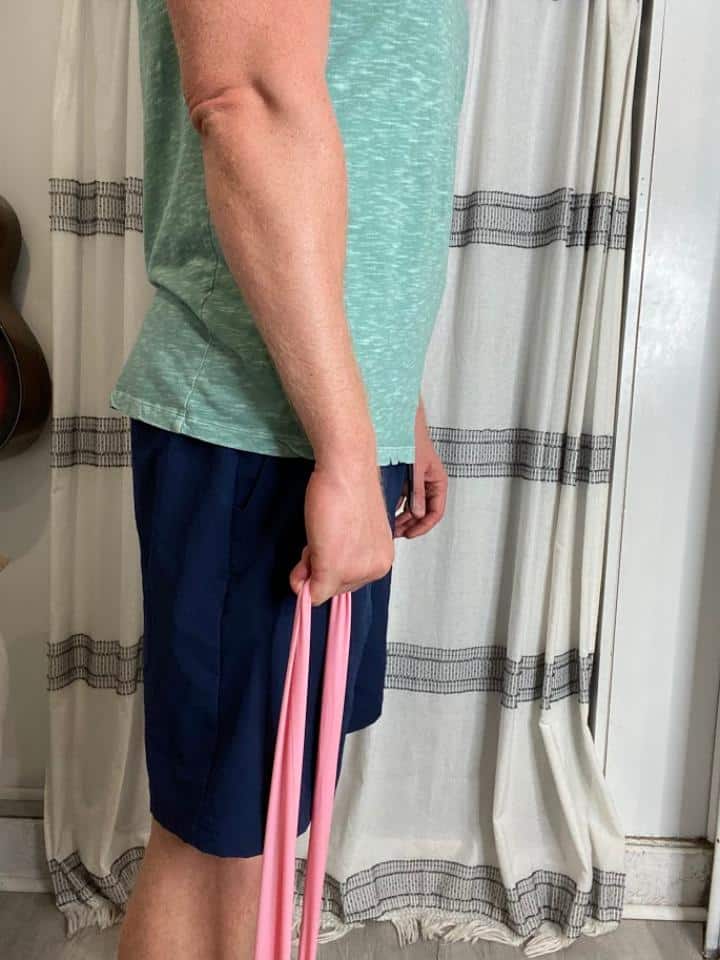
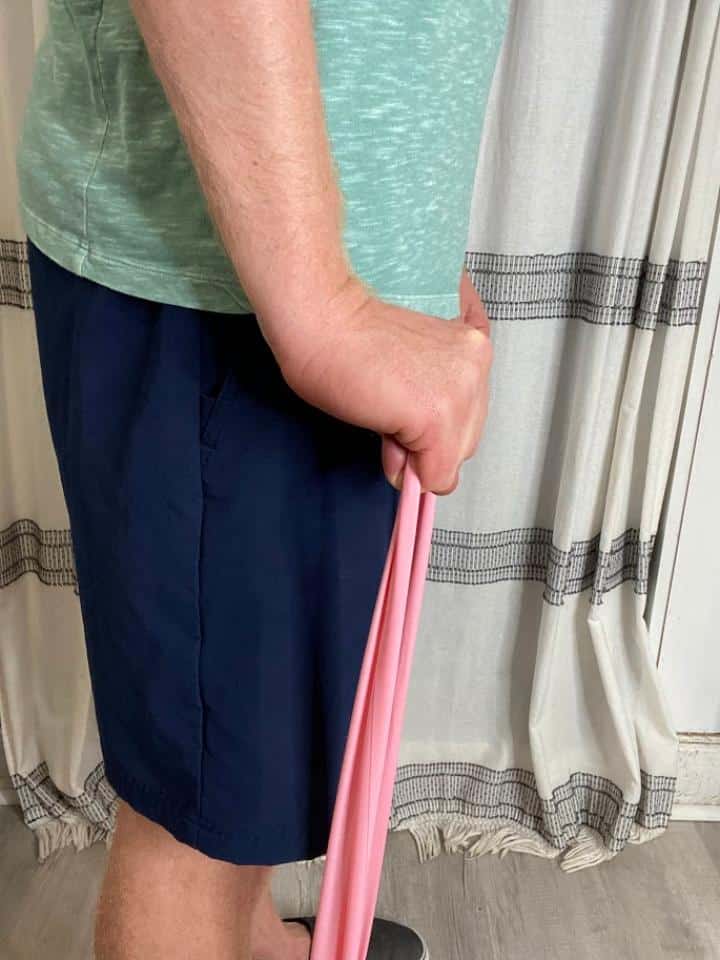
- Position yourself seated with the working arm supported on a table, such as your coffee table. The wrist and hand should be hanging off the edge of the table.
- The palm should be facing down towards the floor, with the wrist straight.
- You can use either a resistance band (light, medium or heavy) anchored under your foot, or a light free weight (2-3#).
- Slowly extend the wrist (moving the top of the hand back towards you), then return to neutral.
- Repeat 10-15 repetitions for 2-3 sets.
2. Wrist Flexion:
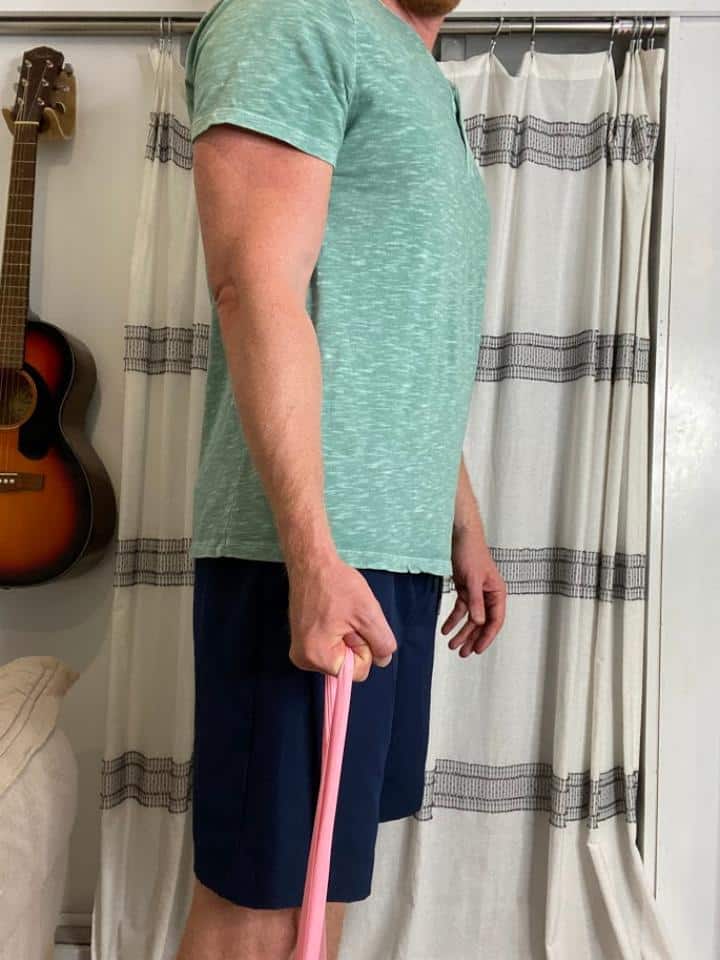
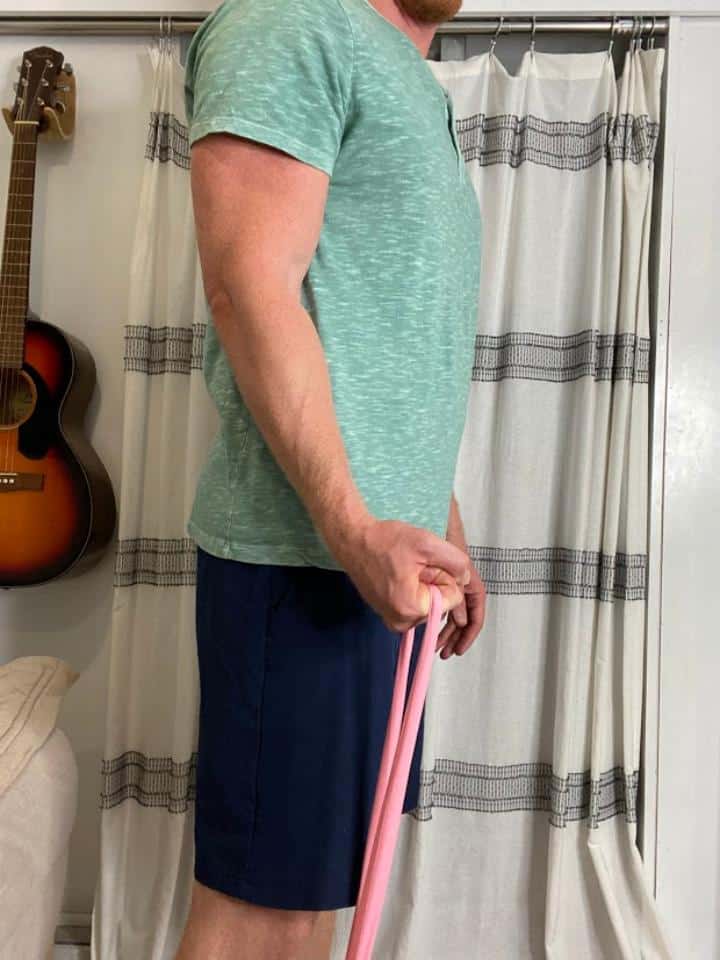
- Position yourself just like with wrist extension, only this time the palm should be facing up towards the ceiling, with the wrist straight.
- You can again use either a resistance band (light, medium or heavy) anchored under your foot, or a light free weight (2-3#).
- Slowly flex the wrist (moving the palm towards you), then return to neutral.
- Repeat 10-15 repetitions for 2-3 sets.
3. Wrist Ulnar Deviation:
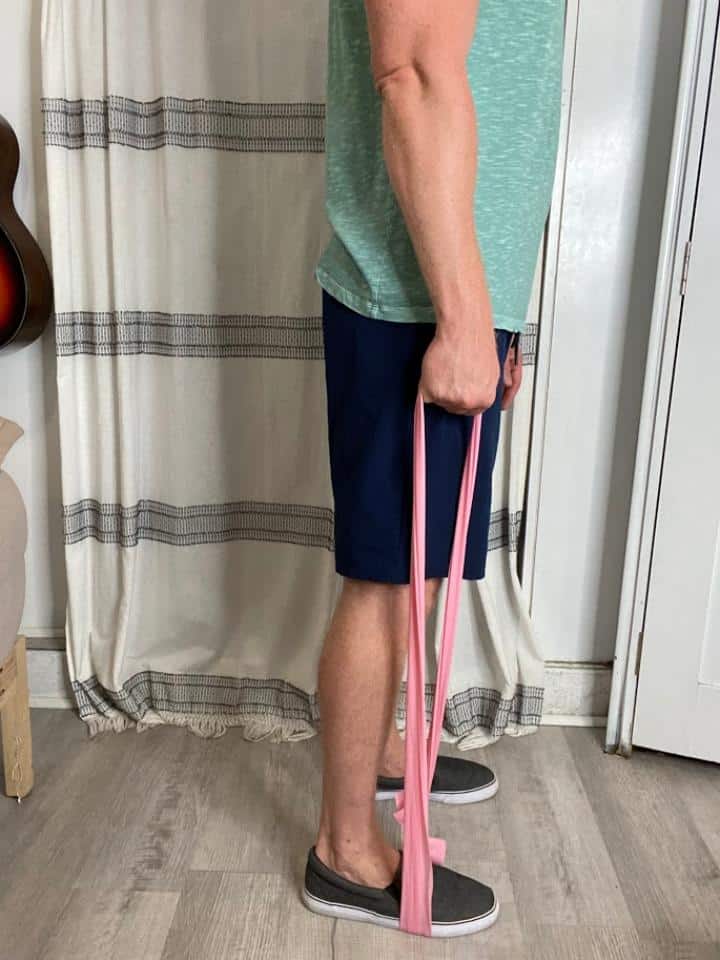
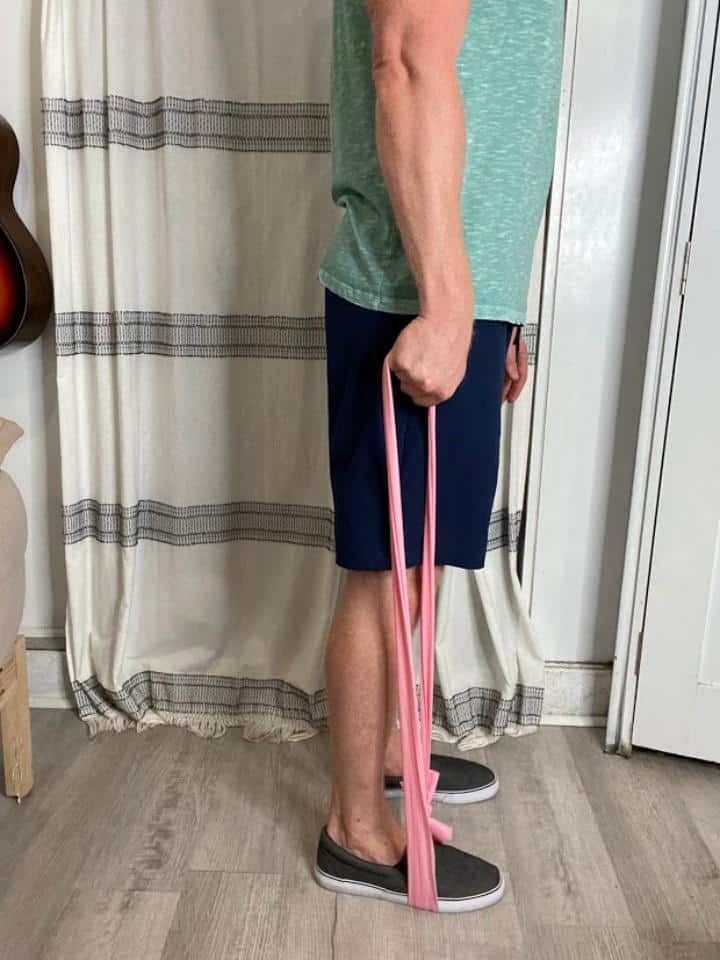
- Begin in standing with the arm by your side. Face the palm towards your leg.
- You can hold a resistance band (light, medium or heavy) anchored under your foot, or a light free weight (2-3#).
- Slowly bend the wrist in the direction of the pinkie side of the wrist (ulnar deviation), then return to neutral.
- Repeat 10-15 repetitions for 2-3 sets.
If nerve symptoms are involved, your therapist will likely incorporate ulnar nerve glides both in therapy and as part of your home program.
Take a look at this video, which demonstrates how to perform an ulnar nerve glide at home to relieve pain.
Surgery
Surgery is normally indicated if either conservative measures have failed or if the cause behind your pain is considered a more emergency circumstance, needing immediate correction.
More emergent circumstances might include an unstable fracture or an ulnar artery thrombosis.
If your circumstances are non-emergent and you’ve failed conservative efforts, you should consult with an orthopedic surgeon, specifically a hand surgeon.
Rehab post-op a wrist procedure may take at least 6-8 weeks to recovery, possibly longer depending on your limitations and pain status.
Be Proactive
If you’re experiencing new ulnar wrist pain that isn’t going away, make sure to consult with your doctor. It’s always better to take a look at the problem early on, so that treatment can begin right away!
FAQ:
How long should I give therapy before consulting with a hand surgeon?
Typically give therapy ~6-8 weeks to see results. If you’re not noticing any progress, then you may need to consult with a hand surgeon.
What type of wrist brace should I use?
It depends on your exact injury and if immobilization or mobilization is being encouraged. Certain braces are more restrictive than others.
It’s best to discuss with your doctor or therapist what their recommendations are.
How long will it take for ulnar nerve compression to heal?
Depending on how severe the compression forces are, this can take anywhere from a few days to a few weeks.















